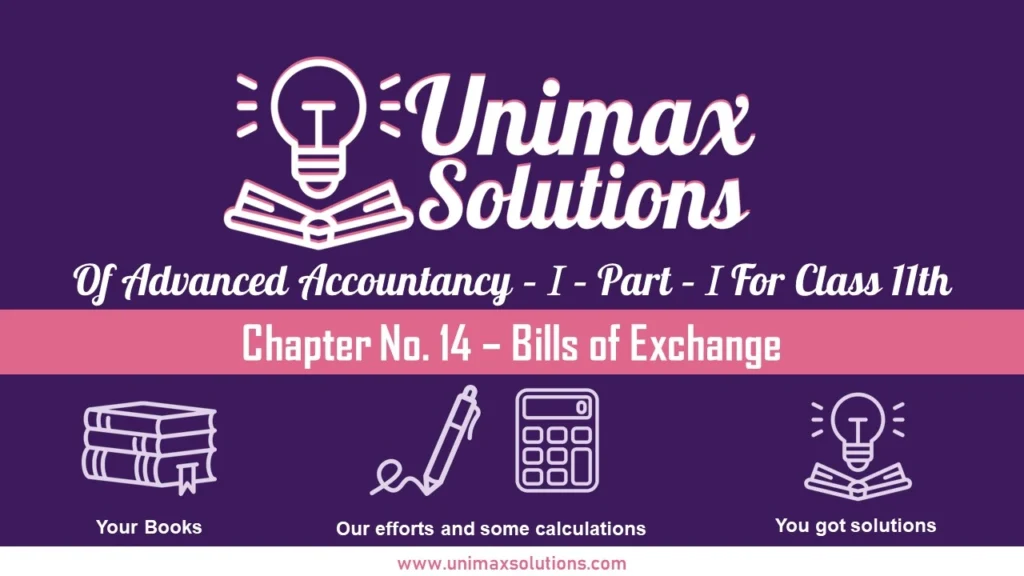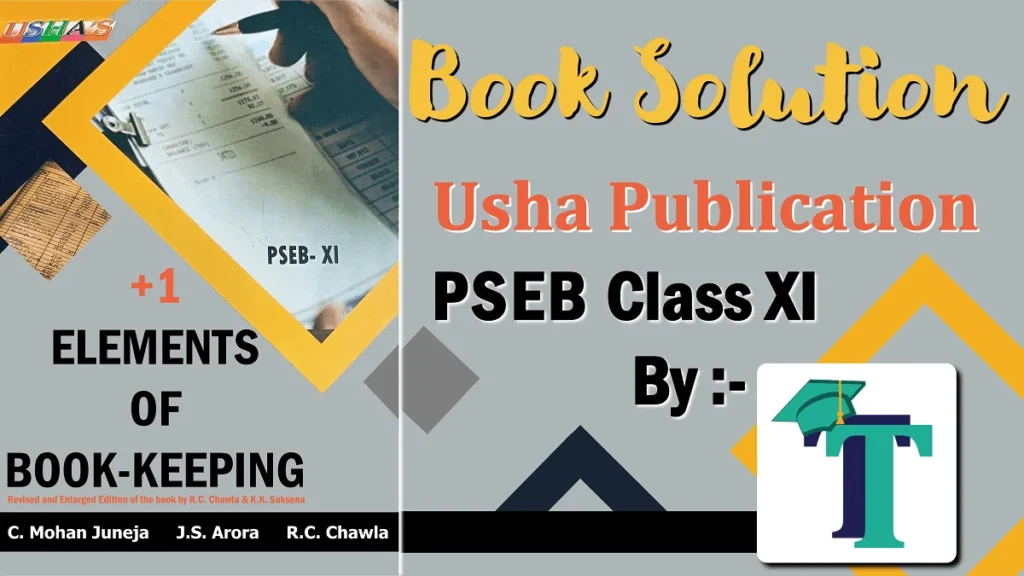
Advertisement
Are you ready to dive into the world of bills of exchange and enhance your understanding of this critical financial instrument? Look no further! Whether you’re a student studying advanced accountancy or a professional seeking to brush up on your knowledge, Chapter No. 14 – Bills of Exchange Unimax – Class 11 is the perfect guide for you. At Unimax Solutions, we provide comprehensive insights into the complexities of bills of exchange, offering practical examples and clear explanations to ensure that you grasp the concepts with ease. Visit our Class 11 Accounts book page to explore this chapter in detail and take your expertise to the next level.
Have you ever found yourself grappling with questions about the nature and usage of bills of exchange? Wondering how they impact financial transactions and what role they play in business operations? Look no further, as we provide solutions to all your queries in this chapter. From the fundamental principles to the intricate mechanics, we delve into the intricacies of bills of exchange, equipping you with the knowledge to navigate this complex financial landscape. Our approach is designed to demystify the subject, ensuring that you gain a solid understanding of bills of exchange and their significance in the realm of accounting and finance. By the end of this chapter, you’ll be well-versed in the nuances of bills of exchange, ready to apply your newfound expertise with confidence.
The solutions to all Questions of Chapter No. 14 – Bills of Exchange Unimax – Class 11
The solutions to all questions of Chapter No. 14 – Bills of Exchange Unimax – Class 11 are shown as follows, just click on the image of the question to get the solution.
Question 4 Chapter 14 – Class 11 Unimax
Advertisement
Question 9 Chapter 14 – Class 11 Unimax
Advertisement
Question 14 Chapter 14 – Class 11 Unimax
Advertisement
1. Comprehensive Solutions for All Chapters of Advanced Accountancy I Class 11 by Unimax
UnimaxSolutions.in offers a comprehensive solution for students studying Advanced Accountancy I Part 1 in Class 11. With their meticulously curated study material, students can access comprehensive solutions to all the questions included within each chapter. By selecting the chapter name from the study material, students can easily navigate through the topics and find detailed explanations and step-by-step solutions to the problems presented in that section. Whether it’s understanding complex accounting concepts, mastering calculation techniques, or analyzing financial statements, Unimax provides a valuable resource to aid students in their learning journey. With these comprehensive solutions at their disposal, students can enhance their understanding, clarify doubts, and improve their problem-solving skills in Advanced Accountancy, ensuring they are well-prepared for their Class 11 examinations.
- Chapter No. 1 – Introduction of Accounting
- Chapter No. 2 – Theory Base of Accounting
- Chapter No. 3 – Vouchers and Transactions
- Chapter No. 4 – Journal
- Chapter No. 5 – Goods and Services Tax (GST): An Introduction
- Chapter No. 6 – Ledger
- Chapter No. 7 – Special Purpose Book – Cash Book
- Chapter No. 8 – Other Subsidiary Books
- Chapter No. 9 – Trial Balance
- Chapter No. 10 – Rectification of Errors
- Chapter No. 11 – Depreciation
- Chapter No. 12 – Provision and Reserves
- Chapter No. 13 – Bank Reconciliation Statement
- Chapter No. 14 – Bills of Exchange
- Chapter No. 15 – Financial Statements (Without Adjustments)
- Chapter No. 16 – Financial Statements (With Adjustments)
- Chapter No. 17 – Accounts from Incomplete Records – Single Entry System
2. Punjab School Education Board (PSEB) Solutions of Usha Publication.
If you’re a student enrolled in the Punjab School Education Board Class 11, it’s essential to explore a wide range of books to cover the syllabus thoroughly. While the prescribed textbooks are undoubtedly valuable, supplementing your studies with additional resources can enhance your understanding and knowledge. Consider checking out other books that align with the curriculum, offering different perspectives and insights on the subjects you’re studying. These supplementary materials can provide you with alternative explanations, practice questions, and examples that may aid in clarifying complex concepts. Moreover, exploring diverse sources can expose you to a variety of writing styles and viewpoints, fostering a broader understanding of the subjects. So, seize the opportunity to expand your learning by delving into other books that can complement your studies and contribute to your academic growth.
Advertisement

